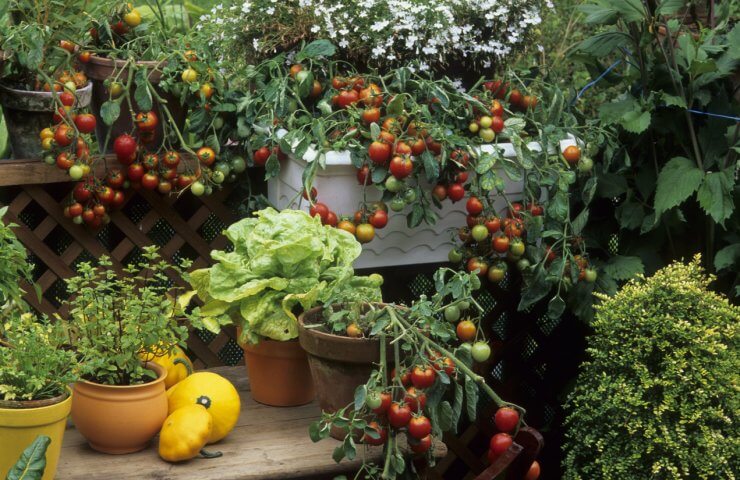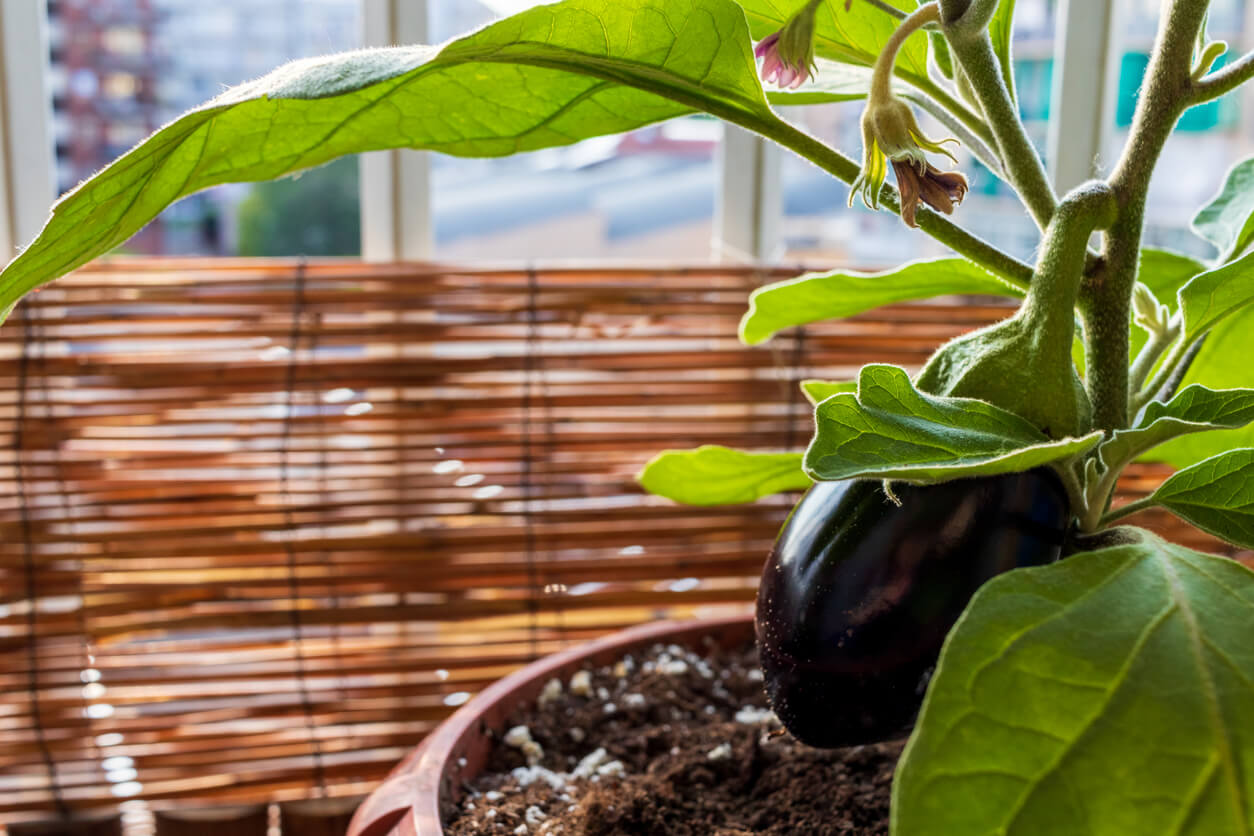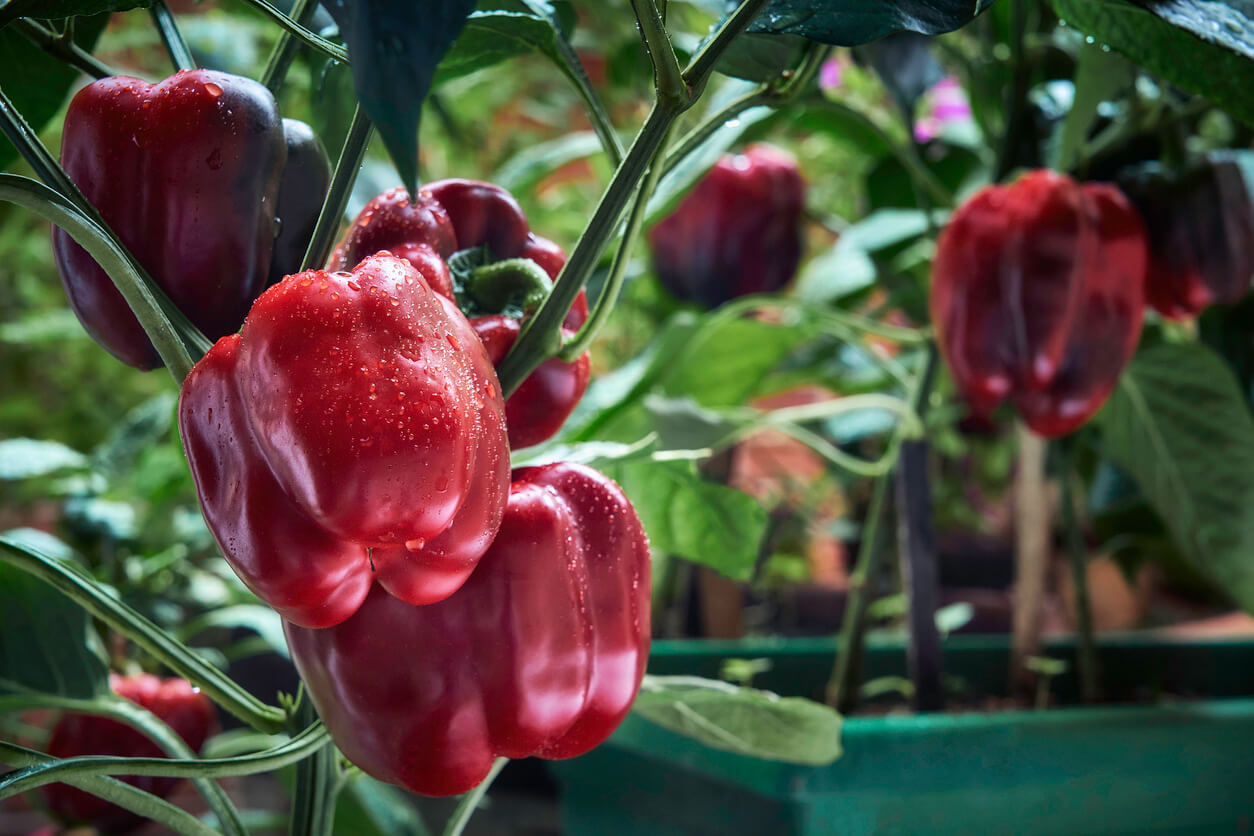
We can’t all have outdoor gardens. But we can all have gardens. And even though the majority of gardens are outdoors, there are some advantages of container gardening indoors, as well.
I know plants thrive with fresh air and sunshine, but there are disadvantages to life in the outdoor garden, too. A surprise hail storm can wipe out your tomatoes. A deer may decide your cucumbers are on tonight’s menu. You don’t have to worry about these things with an indoor garden.
That’s one of the advantages of container gardening, but there are more. And there are a few ways to get those benefits, too.
Discover 7 top tips for growing, harvesting, and enjoying tomatoes from your home garden—when you access the FREE guide The Best Way to Grow Tomatoes, right now!

Discover the 9 advantages of container gardening in your home
I don’t want to sound like outdoor gardening is for the birds. On the contrary, I love being outside with my vegetables and feeling the warm soil in my hands. I also love gardening indoors. This isn’t an either/or situation. Indoor and outdoor gardening both have specific benefits.
That said, there are some advantages of container gardening indoors that are good to know about. I already mentioned that it’s much easier to control weather and pest problems, but that’s only part of it. Here are some other advantages (and how to get them).
1. Disease-free soil. This might be one of the most significant advantages of container gardening, indoors or out. Even with a raised bed, there’s still a risk that contaminated soil is at the base of your bed or that it could be carried in by wind or an animal. With container gardening, whatever soil you put into the pot is it. You don’t have to worry that the roots will reach down beyond that bottom layer and pull up some disastrous disease.
2. Disease-free plants. Okay, it might be a stretch to say that you’ll never have a diseased plant in your indoor vegetable garden. Unlike an in-ground garden, however, you can easily remove a diseased plant and dispose of the soil, making it much less likely that any diseases will spread.
3. Climate control. You can keep your environment as warm or cool as you like for your indoor vegetables. You can add a humidifier or a dehumidifier. The ability to control the climate for your vegetables is entirely within your grasp.
4. Guaranteed breeze. Add a little fan nearby, and you can ensure that your plants will have a nice breeze. There are several benefits to running a fan near indoor plants. The gentle wind can keep mold and fungus spores from settling on leaves. Also, the movement can help strengthen stems.
5. Perfect light. Another of the advantages of container gardening indoors is that you can use grow lights. Cloudy days will never be a problem. And you can differentiate, so plants that need more light can get it, and those that like a little less can be happy, too. Good full-spectrum grow lights can give your plants all the energy they need to grow and produce. By the way, if you are looking for lights, be sure to check out The Best Grow Lights for Tomatoes and Peppers. The three recommendations below come from that article.
- VIPARSPECTRA LED Grow Light (3×3-foot coverage)
- Spider Farmer SF-2000 LED Grow Light (3×4-foot coverage)
- Spider Farmer SF-4000 LED Grow Light (5×5-foot coverage)
6. You can grow all year long. You might be able to garden all year long in warmer climates, but if you want to garden indoors, it doesn’t matter where you live. You can grow vegetables in the depths of winter. Of course, you may need a more elaborate setup if you want to grow a lot, but you can pretty easily grow some greens and herbs without too big of an investment.
7. You don’t need land. Container gardening is ideal for people who live in urban areas or don’t have good soil around their homes. You can have a fair number of herbs and vegetables growing in a small space if you make judicious use of shelving and levels.
8. It improves accessibility. For people with mobility issues, one of the advantages of container gardening is that you can set everything up to be within easy reach without needing to bend, kneel, or stand.
9. No weeds. Do I really need to expand on this? It’s every gardener’s dream!

5 tips for starting your indoor garden
Okay, so those are some of the advantages of container gardening; now, how do you pull it off? There are several ways to approach indoor gardening, but here are a few tips to get you started.
1. Use high-quality indoor container mix. Your soil is everything. In a container, the plant roots can’t spread out in search of nutrients or moisture. What’s in the container is what there is. Therefore, it’s especially important to give your vegetables healthy, nutritious soil or potting mix.
2. Ensure your containers have drainage. That well-drained soil that plants love is dependent on a container with drainage holes.
3. Use appropriately-sized containers. Larger plants and many root vegetables will need deeper containers, while herbs and leafy greens will do just fine in wider, shallower containers.
4. Be aware of different watering needs. Numerous factors impact how often you need to water a container garden. For example, some container materials, like plastic, retain water, while others, like terra cotta, are more porous and allow water to drain more easily. Additionally, your soil will dry out more quickly in dry winter air than in the summer.
5. Have fun. Gardening takes work, yes. But it should be fun and enjoyable. You will have some wins and some losses along the way, but you’ll also have some lovely fresh vegetables!
Do you grow an indoor container garden? What do find to be the biggest advantages of growing indoors?
Note: Food Gardening Network contains links to affiliate websites, including Amazon and Rakuten Affiliate Network, and we may receive a commission for any eligible purchases made by you through links on this page. Any reviews are based on honest reviews of the products.
Discover 7 top tips for growing, harvesting, and enjoying tomatoes from your home garden—when you access the FREE guide The Best Way to Grow Tomatoes, right now!




